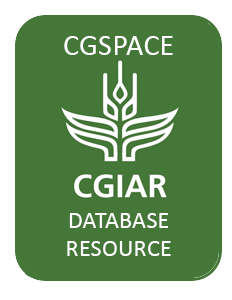Le présent outil identifie des éléments-clés que les décideurs devraient considérer lors de l’élaboration de lois sur la foresterie communautaire. Il comprend d’une part des questions pour la mise en oeuvre de processus de réformes juridiques inclusifs et cohérents permettant d’atteindre un…
In April 2019, UN Habitat through the Global Land Tool Network (GLTN) and Global Urban Observatory (GUO) Units; with support from the Global Land Indicators Initiative (GLII) contacted National Statistical Offices (NSOs), National Land Registries and SDGs focal points with the aim of mobilizing…
Presentation summarising key findings and lessons from 2019 LEGEND report <em><a href="https://landportal.org/library/resources/securing-land-rights-scale">Securing rights to…
The aim of this policy paper is to present successful approaches to secure land tenure rights in rural and urban areas. To support future programmatic decisions by the Federal Ministry for Economic Cooperation and Development (BMZ), this paper focusses especially on impacts and good practices.…
Since 2010, the GIZ Land Programme in Lao PDR has sought to improve the land tenure security of rural communities. The programme currently consists of three projects – the BMZ-commissioned Land Management and Decentralised Planning (LMDP) Project, the Enhanced Land Tenure Security (ELTeS) sub-…
Land plays an important role in the economies of developing countries, and many theories connecting land inequality with different dimensions of economic development already exist. Even though efficacious land distribution allows societies to transition from poverty to a human capital-based…
This report reflects on the experience of DFID land programmes which include LTR across six countries (Guyana, Rwanda, Nigeria, Ethiopia, Tanzania and Mozambique), drawing also on relevant experiences of programmes driven by other donors.
It summarises the drivers of LTR and land…
This is the executive summary of the full report <a href="https://landportal.org/library/resources/securing-land-rights-scale">Securing land rights at scale</a>. The report…
Date: mai 2019
Source: <a href="http://www.agter.org/bdf/fr/corpus_chemin/fiche-chemin-856.html">AGTER</a>
Note No 17 de Coordination Sud. Commission…
O presente livro é resultado dos debates do I Seminário sobre Estrangeirização de Terras e Segurança Alimentar e Nutricional, fi nanciado pelo Programa de Apoio a Eventos no País (PAEP) da CAPES e organizado pelo Instituto de Estudos da Ásia da UFPE com o apoio do Grupo de Pesquisa sobre Fome e…
The study provides a framework to estimate the health risk of farmers using wastewater in agriculture.
The study addresses the SDG 6.3: to contribute to inform water recycling and reuse.
Exposure to wastewater via contact with Nhue River water, pond water and composted excreta…
Landscope is a system for measuring tenure risk, a term created to describe the financial risk associated with local opposition to a real asset. This kind of opposition to investments is very common across Africa, Asia and Latin America, often causing significant financial losses and operational…










